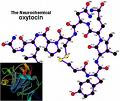The hazards of induction may be worse than you thought


Induction of labor is a phrase meaning that labor contractions are encouraged by external means. Drug induced labor can be brought on with Pitocin in an IV drip, prostaglandin gels or a pill, cytotec (misoprostol). Dr. Michel Odent (www.birthworks.org/primalhealth) writes of the concerns about Induction and autism in Midwifery Today Online Magazine. Please read the entire article and support Midwifery Today. The following are exerpts from that article:
“We have many reasons to suspect a link between “autism epidemic” and “labour induction epidemic.” The first reason is that in all studies that took into account independently the variable “labour induction,” it appeared as a risk factor. Labour induction should be explicitly taken into consideration by epidemiologists, because it can be associated either with birth by the vaginal route (with or without intervention such as forceps), or with cesarean birth…
…the results of recent studies suggest that children with autistic disorder show alterations in their oxytocin system. The first clues came from a study of mid-day blood samples from 29 autistic and 30 age-matched normal children, all prepubertal.(Modahl, C., et al. Plasma oxytocin levels in autistic children. 1998. Biol Psychiatry (4): 270–77) The autistic group appeared to have significantly lower blood oxytocin levels than the normal group…
autistic and 30 age-matched normal children, all prepubertal.(Modahl, C., et al. Plasma oxytocin levels in autistic children. 1998. Biol Psychiatry (4): 270–77) The autistic group appeared to have significantly lower blood oxytocin levels than the normal group…
… Artificial induction of labour creates situations that undoubtedly interfere with the development and the reorganization of the oxytocin system in such a critical period. This fact alone is a reason for further epidemiological studies focusing on labour induction as a possible risk factor. It would be useful to know also how autistic children release oxytocin. Oxytocin is more effective when released rhythmically, in a succession of fast pulsations. Today it is possible to measure the rhythmicity “the pulsatility” of oxytocin release. In other words, the time has come to study autism as an “impaired capacity to love.”‘
Midwifery Today’s Editor Jan Triton notes: Oxytocin is a hormone released by the posterior pituitary gland. Its mechanical effects, particularly its stimulating effects on uterine contractions during labour, have been known for a long time. Recently we learned that oxytocin also has important behavioral effects. Today we are in a position to summarize the results of dozens of studies by claiming that oxytocin is the typical hormone of love: Whichever facet of love one considers, oxytocin is involved. Read more in the free MT Online Issue.
To learn other problems with inducing labor, read the CIMS statement.
